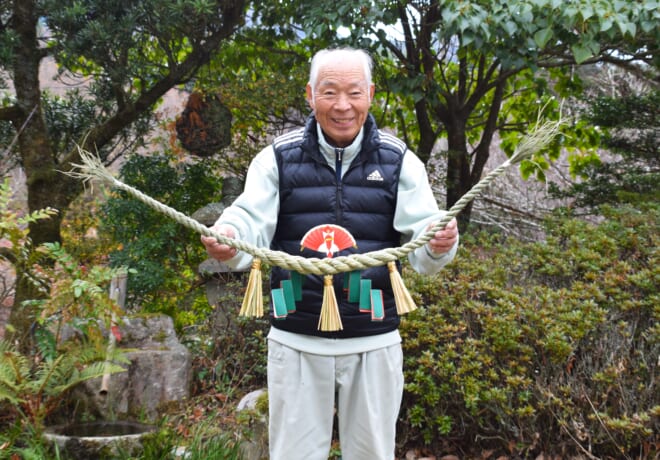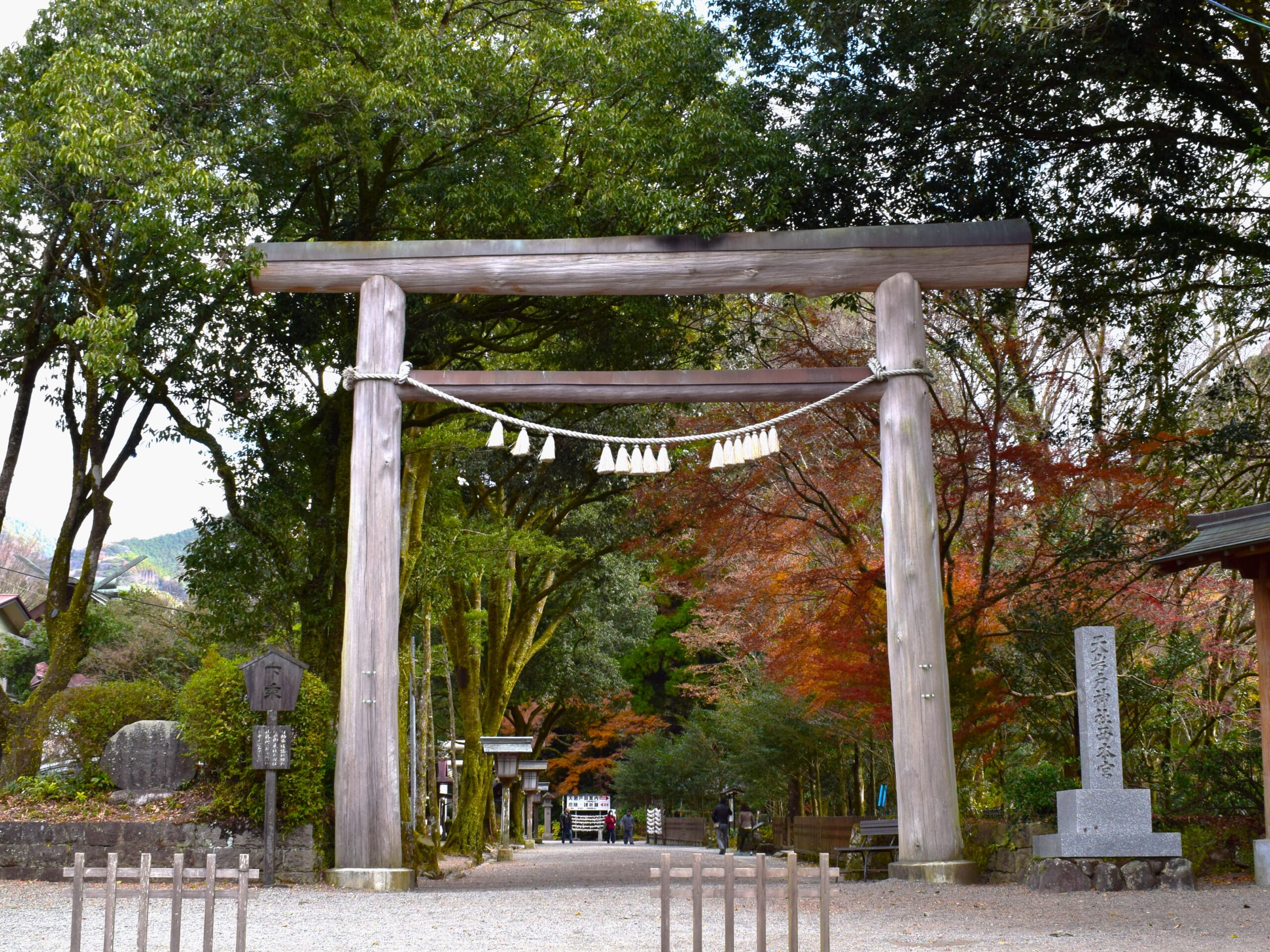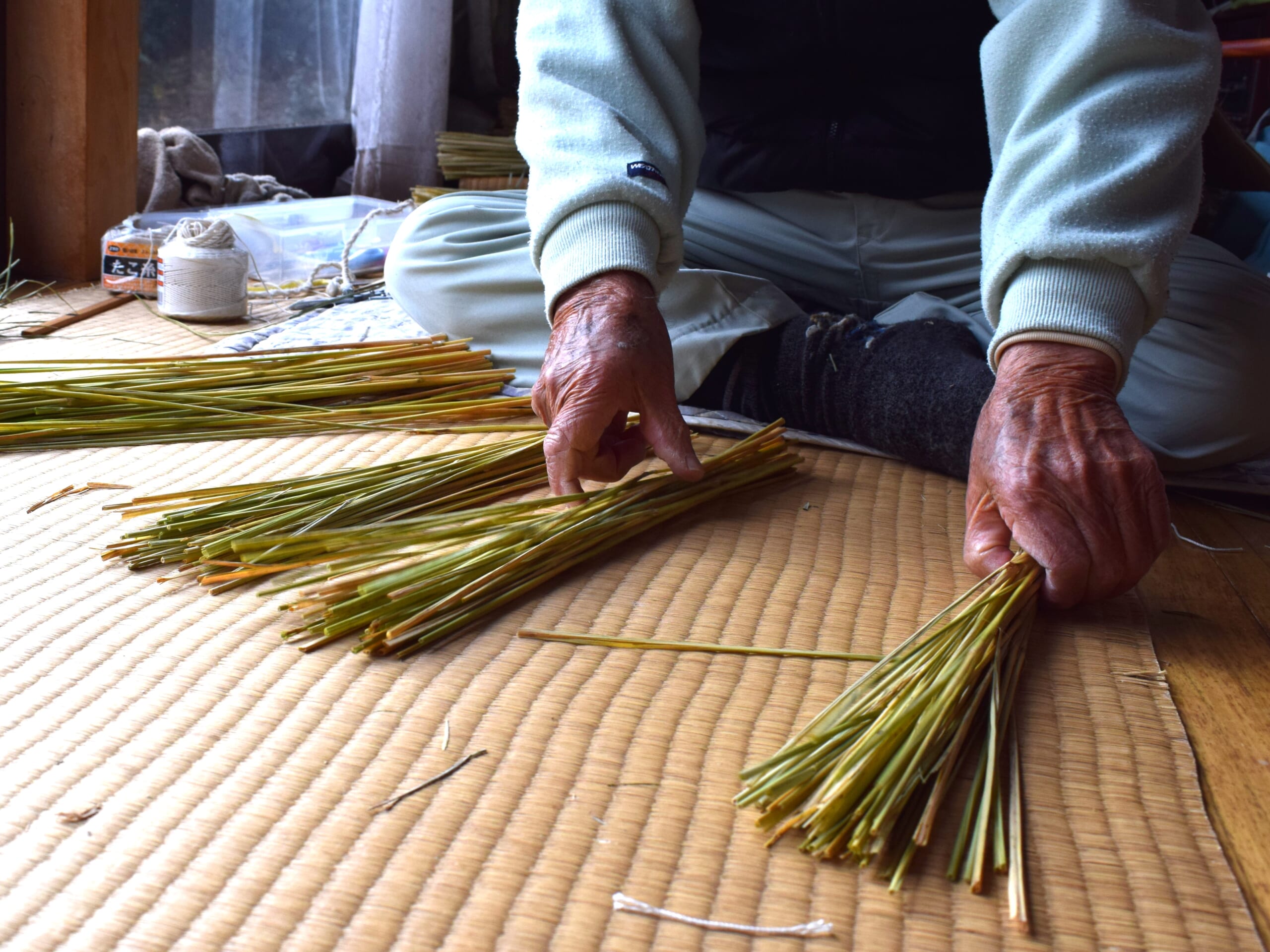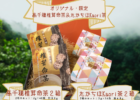

Takachiho Slow Life Vol 4: A town that lives with the gods, knots spun by tradition
- 0 お気に入り
- 958 view
- お気に入り登録

Takachiho is a town surrounded by mountains and rich in nature.
The lifestyle lived by the people who live with the richness of nature, is the very essence of a slow life.
They live in harmony with nature and in a carefully leisured pace. This month’s article introduces shimenawa, sacred straw ropes.
Takachiho, the birthplace of shimenawa

The history of the shimenawa begins with the Ama-no-Iwato cave, enshrined at Ama-no-Iwato Shrine in Takachiho.
★Click here for directions to Ama-no-Iwato Shrine (West main shrine)
Amaterasu-Omikami, the goddess of the sun, shut herself in a cave in Ama-no-Iwato and the world went completely dark.
It is said that the origin of the shimenawa was when a rope was tied around the entrance to the cave in order to prevent her from hiding again.

At New Year’s, shimenawa are seen not only at shrines and shinto altars, but also at the entrances of homes and businesses.
Shimenawa have the meaning of a “boundary” separating the realm where the gods reside from the everyday realm, and a house with a shimenawa decoration is a sign that the house is ready to welcome the New Year’s god.
In Takachiho, there is a custom of decorating shimenawa’s not only at New Year’s but also throughout the year.
At the end of each year, the town’s residents give thanks for a year of good health, by replaceing the rope with a new one in order to welcome the god in the New Year. It also has the meaning of worshipping the spirits of ancestors, wishing for good health and a bountiful harvest.
The shimenawa of Takachiho has a distinctive feature: From the right, there are seven, five and three straw stalks hanging from it. This is derived from a chanting text describing the origins of the Takachiho Kagura festival sites and dances, and represents the seven generations of heavenly gods, five generations of earthly gods and three generations of Mioya gods (our ancestors), making it one god per rope.
Visiting the shimenawa masters of Takachiho
In Takachiho, there are people called ‘shimenawa masters’.
We asked Keisuke Takeda, who makes shimenawa’s in the Takachiho area called Gokasho, by the foot of Mt. Sobo, to show us how they are made.

The rice plants used to make shimenawa are specially grown for shimenawa in the terraced rice fields of Takachiho.

The straws are checked one by one, and any insects or rice attached them is removed.

Once sorted, the lengths are aligned.

To make one shimenawa, the straws are divided into two bundles. Takeda can feel as he separated them that the left and right sides have the same thickness.

He ties the two bundles together at the centre of the shimenawa. Again, no ruler is used, but Takeda uses his senses. It may look like casual work, but each of these tasks is a craftsmanship and the result of his experience!

The base of the straw are now divided into three parts.

The roots, which have been divided into three parts, are tied tightly to form the core for twisting straws.

He twists the tip of the straws tightly around the core he made.

While dexterously securing one of the twisted parts with a foot, another one is made in the same way.

The two completed parts are then twisted together by rubbing them against each other strongly between the palms of the hands. It looks easy, but it is actually very difficult and requires a lot of skill.

The other remaining part is wrapped around the twisted up one in the same way, and the body is finished!

After twisting, the straws sticking out are carefully cut off. It is really a series of fine manual operations.

The tassels attached to the body are also individually handmade.

The straw are carefully folded using the base of the straw.

The body and tassels of the shimenawa are done. Now, one more step before the it is finished!

The paper drops attached to the shimenawa are usually white, but in Takachiho the shimenawa are green and red.
The red represents the god of fire and the earth, while the green represents the god of water and the heavenly realm.

After attaching the ornaments, it is finished!
From start to finish, this shimenawa is carefully made by hand.
“Isn’t it hard work?” I asked.
“It’s fun to make them while thinking about the people who will be using them and their homes,” replies Takeda with a smile.
Conclusion
What did you think of the shimenawa in Takachiho?
Shimenawa, spun by the people who live with the terraced rice fields, myths, nature and history of Takachiho, are sold at Michi-no-Eki Takachiho and product shops in Takachiho at the end of the year when New Year is approaching.
On the winter solstice every year, a sacred ritual is held to replace the shimenawa at the Ama-no-Iwato cave, the birthplace of the shimenawa.
 関連の記事
関連の記事
 コンシェルジュからのおすすめ
コンシェルジュからのおすすめ
お客様のご要望に沿ったおすすめの観光情報・宿(ホテル 旅館)・レストラン・居酒屋・カフェ・ショップ等をコンシェルジュスタッフが厳選してご紹介しております。














